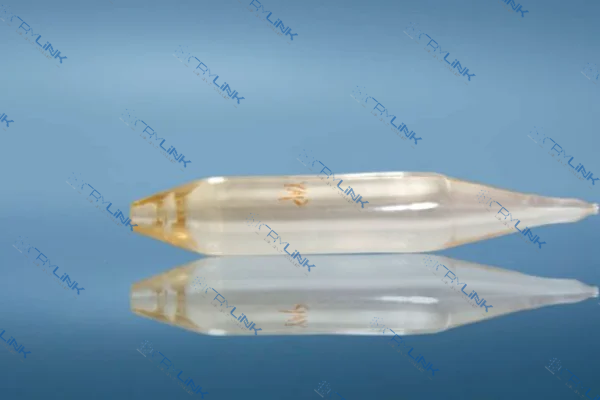Introduction to Crystal Birefringence
In the fascinating and complex world of optics, an important property known as crystal birefringence plays a significant role. This inherent property can be found in certain types of crystals and leads to differing propagation velocities for light with varying polarizations. Birefringence is an optical phenomenon that has captivated the interest of scientists and researchers for centuries due to its multifaceted applications in a range of scientific fields, most prominently in the design and operation of lasers.
Fundamental Concepts: Birefringence and Polarization
Birefringence, also commonly referred to as double refraction, is a phenomenon that occurs when a crystal divides incident light into two separate rays. Each of these rays has orthogonal polarization, that is, they are polarized at right angles to one another. This particular characteristic of birefringent crystals gives rise to a crucial concept in optical physics known as polarization. The term ‘polarization’ in the context of light refers to the specific orientation of the electric field vector. This is a key property that significantly influences how light interacts with various media, including crystals, and has important implications for optical technologies such as lasers.

Diving Deeper: The Mechanism of Crystal Birefringence
So, how exactly does birefringence occur within crystals? The answer lies in the unique structure of these crystals. Birefringent crystals have what is known as an anisotropic structure. This means they display different indices of refraction along different crystal axes. Essentially, this means that the speed of light – and consequently the refractive index – varies depending on the direction in which it is travelling through the crystal.
When an unpolarized light wave – that is, a light wave that is oscillating in more than one plane – strikes a birefringent crystal, the light is split into two separate rays that are each polarized in a different plane. One of these light rays will follow the ordinary rules of refraction, behaving as if the crystal were isotropic. The other, however, will take an ‘extraordinary’ path, refracting differently due to the anisotropic nature of the crystal. It is this division of light, and the consequent formation of two distinct rays, that leads to the manifestation of birefringence.
Birefringent Crystals: Different Types and Applications
There are numerous types of crystals that exhibit birefringence, including but not limited to calcite, quartz, and topaz. Each of these crystals possesses unique optical properties due to their specific molecular structure and arrangement. Calcite, for example, is strongly birefringent and can split incoming light into two distinct rays that diverge widely. Quartz, on the other hand, demonstrates a lower level of birefringence and produces rays that are closer together.
These birefringent crystals find use in a wide array of applications. They are used in the manufacturing of various optical devices and components, including waveplates, polarizers, and optical modulators. These crystals also play a critical role in the telecommunications industry, where they are used in fiber optic cables to enable the transmission of data over long distances. Furthermore, birefringent crystals are fundamental to the fields of material analysis and mineralogy, allowing scientists to gain valuable insights into the composition and structure of various materials.
However, one of the most significant applications of birefringent crystals is in the development of laser technology.

The Connection Between Birefringence and Lasers
Lasers, which are devices that emit light through a process of optical amplification, rely heavily on the polarization state of the light they produce. The direction in which the electric field vectors of the light waves are oscillating – the light’s polarization – can greatly impact the properties and behavior of the laser. Herein lies the critical role of birefringent crystals: they serve as vital components in lasers, acting as polarization elements that can control and manipulate the polarization of the light produced. This, in turn, directly impacts the efficiency and quality of the laser’s output.
Controlling Laser Polarization: The Role of Birefringence
Birefringent crystals provide an effective and reliable method for controlling the polarization of laser beams. By carefully manipulating the optical path differences within the crystal – that is, the difference in distance travelled by the two light rays produced by the crystal – and precisely aligning the crystal, it is possible to influence the polarization state of the light emitted by the laser.
This polarization control is a critical factor in optimizing the performance of lasers. By ensuring that the light produced is polarized in a specific manner, it is possible to control the properties of the laser beam and tailor it to suit specific applications. For instance, in some cases, a laser with a particular polarization state may be able to cut through materials more efficiently or produce a higher quality beam.

Impact on Laser Technology: Polarization Dependence and Beam Quality
The birefringent effects of crystals have a substantial impact on the polarization dependence of lasers. This refers to the fact that the properties and performance of a laser can be influenced by the polarization state of the light it produces. This dependence, in turn, affects the quality of the laser beam, its brightness, and its stability.
Understanding the relationship between birefringence and polarization dependence allows for enhanced control over the properties and behavior of lasers. This is particularly relevant in industries such as manufacturing, where lasers are used for cutting and welding materials, or in medicine, where lasers are used in a variety of diagnostic and therapeutic procedures. In these applications, the ability to control and manipulate the polarization state of a laser can drive significant improvements in performance and results.

Techniques for Mitigating Birefringence Effects in Lasers
While birefringence offers several benefits for the control and manipulation of laser polarization, it can also introduce unwanted effects. For instance, birefringence can cause polarization instability, where the polarization state of the laser varies unpredictably. This can negatively impact the performance of the laser and potentially render it unsuitable for certain applications.
Thankfully, there are various techniques available for mitigating the negative effects of birefringence in lasers. These include thermal management strategies, which involve carefully controlling the temperature of the laser and its components to reduce thermal stress and prevent changes in birefringence; stress management strategies, which involve designing and assembling the laser in such a way as to minimize mechanical stress and thus prevent changes in birefringence; and the strategic use of polarization-maintaining (PM) fibers, which can maintain a stable polarization state even in the presence of environmental disturbances.
Exploring Future Prospects: Birefringence in Next-Generation Laser Systems
The phenomenon of birefringence, with its deep-rooted connection to polarization control in lasers, holds great promise for the development of future laser technologies. As our understanding of birefringence deepens, and as our ability to control and manipulate this phenomenon improves, so too does our capacity to harness birefringence to create more efficient, higher-quality laser systems.
For instance, advances in materials science could lead to the development of new types of birefringent crystals with enhanced properties, such as greater birefringence or improved thermal stability. Similarly, advances in optical design could result in novel laser architectures that make more efficient use of birefringence for polarization control.
In the realm of applications, future laser technologies could be further refined to better meet the specific needs of different industries. For example, in manufacturing, next-generation lasers could deliver improved cutting precision or faster processing speeds. In medicine, future lasers could offer more accurate diagnostics or safer, more effective treatments.

Conclusion
Crystal birefringence plays an indispensable role in determining the polarization control of lasers. Through understanding this complex yet fascinating phenomenon, we can unlock new opportunities for optimizing the performance of lasers. This, in turn, can lead to significant advancements in a range of fields, from telecommunications and manufacturing to medicine and research. As such, the study and application of birefringence remains a vibrant and dynamic field, promising exciting developments and breakthroughs in the years to come.
Frequently Asked Questions
- 1. What is crystal birefringence?
- Crystal birefringence refers to the unique optical property where a crystal refracts light differently along different axes. This leads to the phenomenon of double refraction or the splitting of light into two rays, each polarized in a different plane.
- 2. How does birefringence affect laser performance?
- Birefringence affects the polarization state of laser beams, which in turn can significantly impact the performance and properties of the laser. This includes the quality of the laser beam, its brightness, and its stability. By understanding and controlling the effects of birefringence, it is possible to enhance the performance of lasers and tailor their output to suit specific applications.
- 3. What types of crystals exhibit birefringence?
- There are several types of crystals that exhibit birefringence. Some of the most well-known examples include calcite, quartz, and topaz. Each of these crystals has unique optical properties due to its specific molecular structure and arrangement, and as such, each can produce different effects when it comes to the refraction and polarization of light.
- 4. How can the negative effects of birefringence be mitigated in lasers?
- There are a number of strategies available for mitigating the negative effects of birefringence in lasers. These include thermal management strategies, which aim to control the temperature of the laser and its components; stress management strategies, which involve the careful design and assembly of the laser; and the use of polarization-maintaining (PM) fibers, which can help to maintain a stable polarization state even in the face of environmental disturbances.
- 5. What is the role of birefringence in future laser technologies?
- Birefringence holds significant potential for the development of future laser technologies. As our understanding of birefringence and its effects on laser polarization continues to deepen, we can expect to see more efficient, higher-quality laser systems. This could lead to significant advancements in various fields, including telecommunications, manufacturing, medicine, and research.

Frank
Frank graduated from the University of Shanghai for Science and Technology, majoring in optics. As a technical engineer at Crylink Company, he deeply understands crystal materials and laser components.
Related Video(s) with this Article
Related Product(s) with this Article
Related Application(s) with this Article
